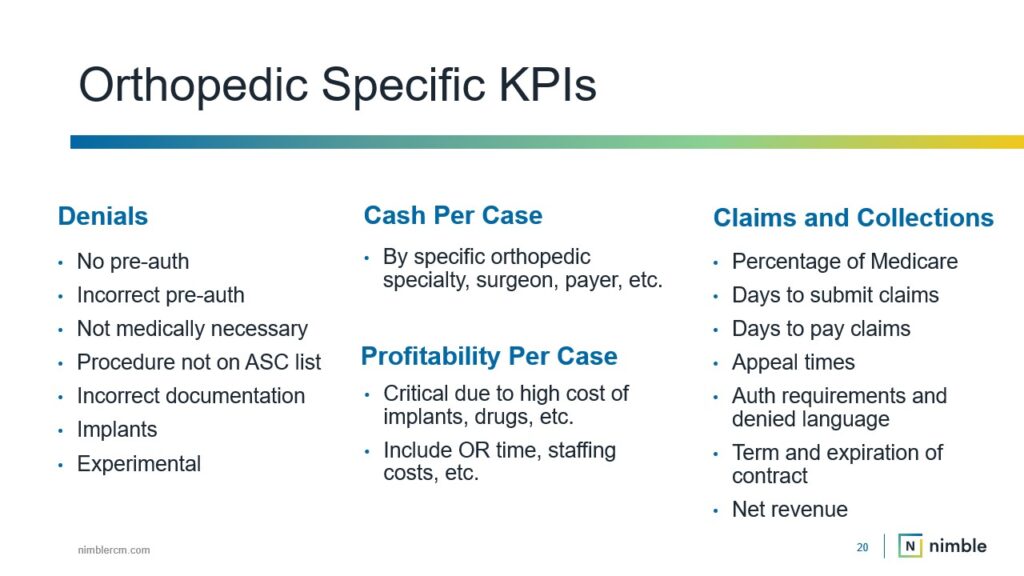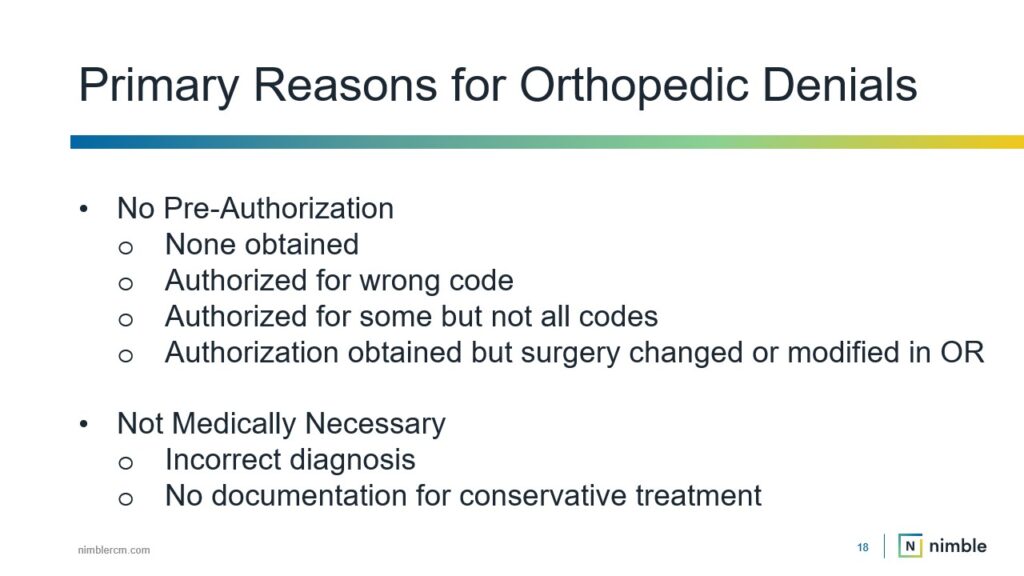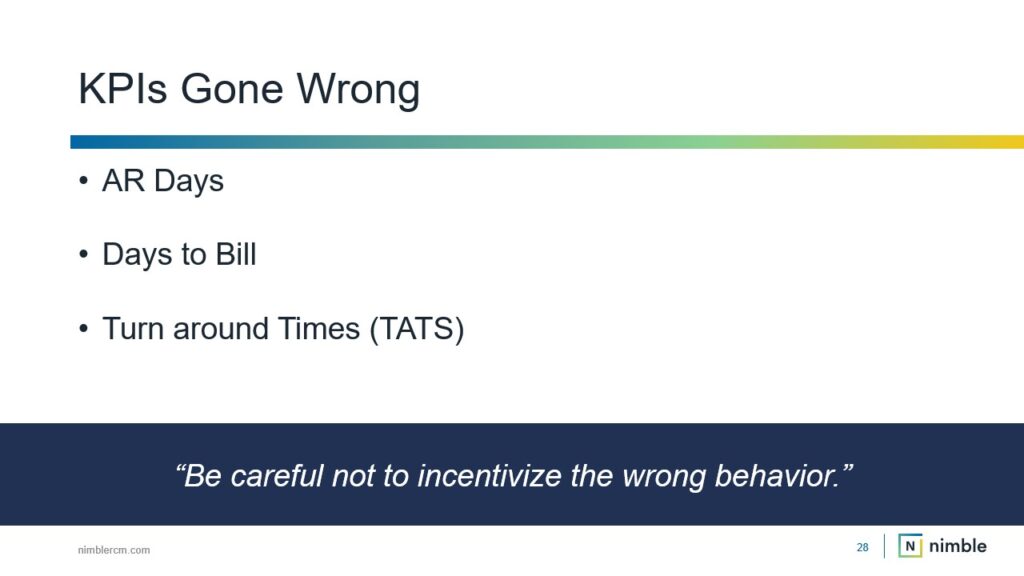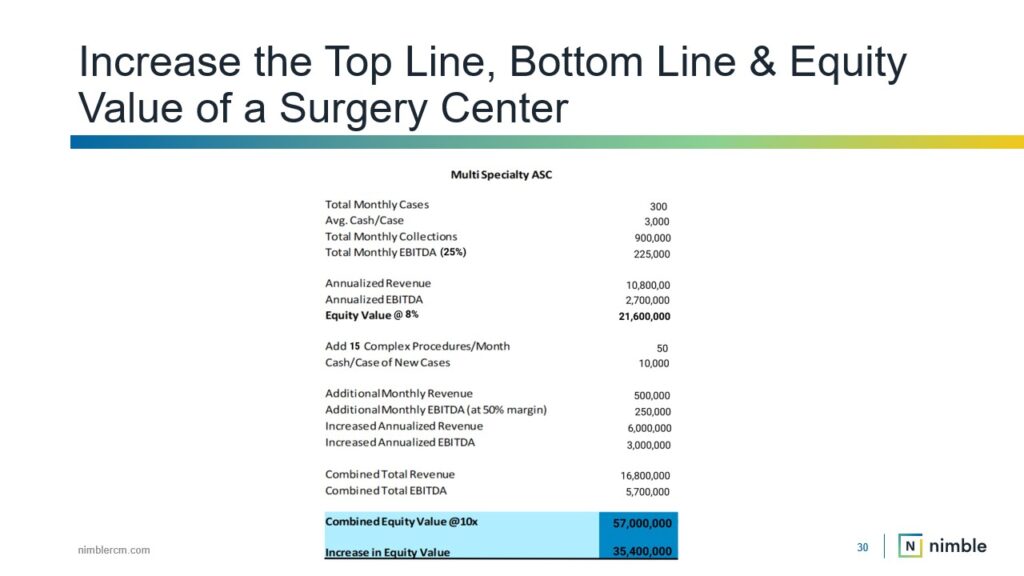A Closer Look at Orthopedic KPIs
As more orthopedic procedures migrate to the outpatient setting, orthopedic surgery centers need to be adaptable, specific, and thoughtful in establishing Key Performance Indicators (KPIs) to ensure these cases are beneficial from a financial standpoint. To paraphrase Harvard Professor Dr. Robert Kaplan, who developed the Balanced Scorecard for business performance, “you can’t manage what you don’t measure.”
In our recent webinar, we delve into enterprise KPIs for orthopedic practices, shedding light on the metrics that define and measure progress across financial, operational, patient satisfaction, and employee engagement.
You can watch the entire webinar in the on-demand recording, now available on our website.
Below are insights and actionable takeaways from the webinar.

The Right KPIs for Orthopedic Surgery Centers
Not all metrics are created equal. Selecting KPIs that align with your practice’s specific goals is crucial for success.
However, one universal KPI that should top every list is tracking the causes of claim denials.
Understanding why denials are happening and their financial impact will optimize your rate of collections and overall profitability.
As you track your denial rate by percentage, you’ll want to focus on where the denials originate from to determine if the cause is pre-authorization, medical necessity, additional documentation required, and so on. You’ll also want to track the dollar amount on each denial, and if they are occurring on your most frequent or your most profitable cases. Knowing this information will help you prioritize the order in which you address them.

The Role Managed Care Contracts Play in Orthopedic Denials
When tracking denial rates and establishing KPIs to decrease them for our clients, we’ve noted that pre-authorization and not medically necessary are among the top two orthopedic denials and are typically seen on high dollar claims. While there are many reasons for these denials, reviewing your facility’s payer requirements and contract terms can sometimes be overlooked.
For instance, there are very specific payer policies and requirements for billing implants. Unless you bill exactly the way the contract reads, you can be at risk for denials. Ensuring your revenue cycle management team has access to complete contract terms, and reviewing those contracts annually will ensure greater accuracy within pre-authorization, coding, and billing processes.
Since managed care contracts set the foundation for your orthopedic practice’s financial success, case costing – or tracking all costs associated with a case and comparing that to your reimbursement per payer – will determine your profit margin and if your managed care contracts should be renegotiated.
Also, as more orthopedic procedures migrate to the outpatient setting, and if you’re taking on new cases that require implants or biologics, we recommend ensuring your contracts have coverage for the implants you choose and confirm if biologics are considered experimental. The costs associated with those cases can get very expensive if you’re not getting reimbursed appropriately.

Pitfalls of Narrow Focus: Orthopedic KPIs Gone Wrong
While KPIs are vital, a myopic focus on a single metric can sometimes lead to unintended consequences. It’s important to think comprehensively about what you’re establishing and how you’re meeting your goals.
For example, if your primary focus is reducing days to bill for implant claims, your team might not be as focused on confirming all required documentation is being submitted and all documentation is error-free because that can take considerable time to verify, thus increasing the days to bill. As a result, you may see a greater number of claim issues, which means your rate of collections will not improve, even if it takes your team less time to get implant claims out the door.
While many orthopedic practices want days in A/R to be as low as possible, this can often lead to poor claim follow up, including not appealing claims or not battling for the dollars a payer should reimburse. The ultimate goal should be more than just lowering days in A/R and all of your KPIs should be set up to ensure a healthy cash flow.
When tracking your turnaround times, we recommend balancing this focus with understanding why certain claims take longer to clear than others. At the end of the day, you don’t pay your bills with low days in A/R, you pay your bills with the cash that comes in the door.

Final Thoughts on Orthopedic KPIs: Next Generation KPIs
As you gain mastery over your core KPIs by department, the journey doesn’t end; it evolves. Forward thinking, exploring ways to retain existing patients, attract new ones, and enhance operational cost effectiveness will bring you to embrace what we refer to as next generation KPIs.
For example, orthopedic practices can reimagine their KPIs by identifying one or two metrics that truly drive success. During the webinar, Nader illustrates this concept with a multi-specialty ASC, showcasing how strategic focus on highly profitable orthopedic cases led to remarkable growth in equity value.
In this example, the multi-specialty ASC analyzed which cases are the most profitable, then added 15 of those cases per month. The ASC’s equity value grew from $21 million to $57 million with this targeted approach. You can access our orthopedic case study to learn more about how this strategy was achieved.
Take your surgical practice to the next level with new growth opportunities in orthopedics. Access the full webinar Maximizing ASC Performance in Orthopedics and Beyond through New Technologies and KPIs.